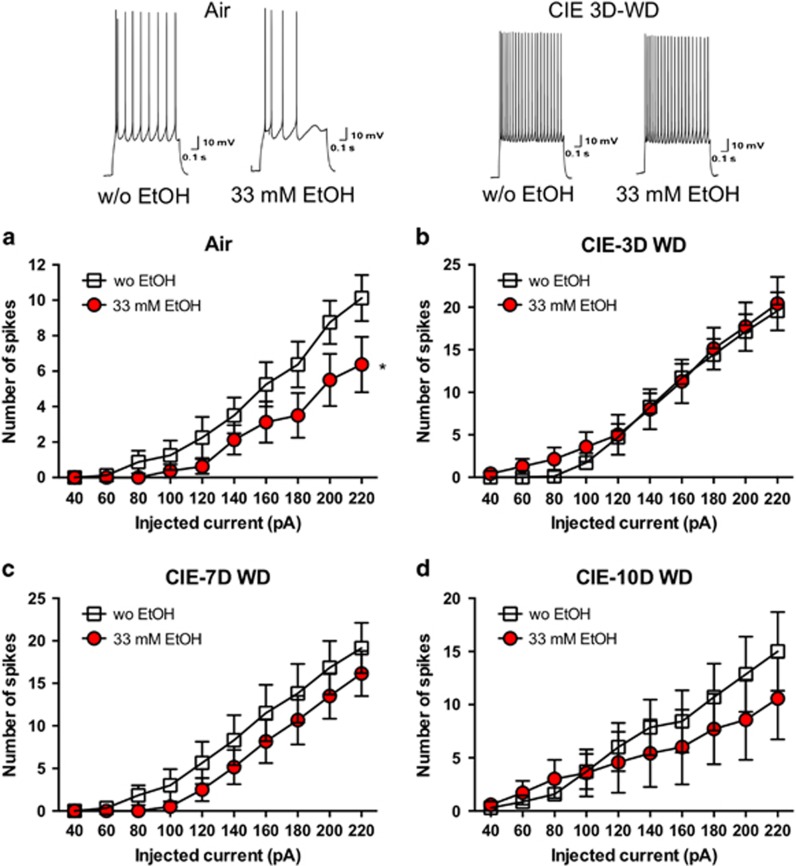Figure 6.
Chronic intermittent ethanol (CIE) exposure suppresses the ability of acute ethanol to inhibit spike firing of lateral orbitofrontal cortex (lOFC) neurons. Representative traces show current-evoked spiking in the absence and presence of 33 mM ethanol applied to lOFC neurons from air control (left) and CIE-treated (right) mice. Graphs show summary of the effect of acute ethanol (33 mM, 10 min) on action potential (AP) spiking (mean±SEM) induced by a series of current injections (40–220 pA) in lOFC neurons obtained from air control (a, n=8) and CIE-treated mice at 3-day (b, n=7), 7-day (c, n=6), and 10-days (d, n=7) of withdrawal (WD). Similar to the results shown in Figure 1b, WD from CIE exposure produced an increase in AP firing (note different y axes between a and b–e). Acute ethanol significantly reduced spiking in lOFC neurons obtained from air control (a; two-way analysis of variance (ANOVA): F(1, 7)=6.66, *p=0.036), but did not significantly change AP firing in 3-day (b; two-way ANOVA: F(1, 6)=1.14, p=0.327), 7-day (c; two-way ANOVA: F(1, 5)=3.68, p=0.113) or 10-day (d; two-way ANOVA: F(1, 6)=0.583, p=0.474) CIE groups.

